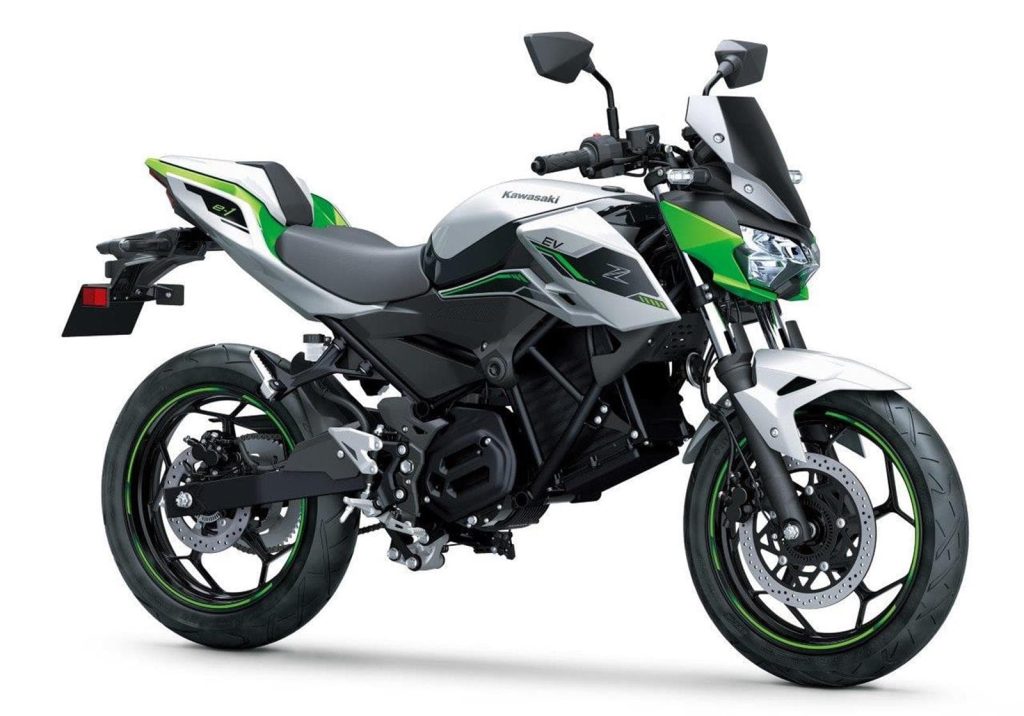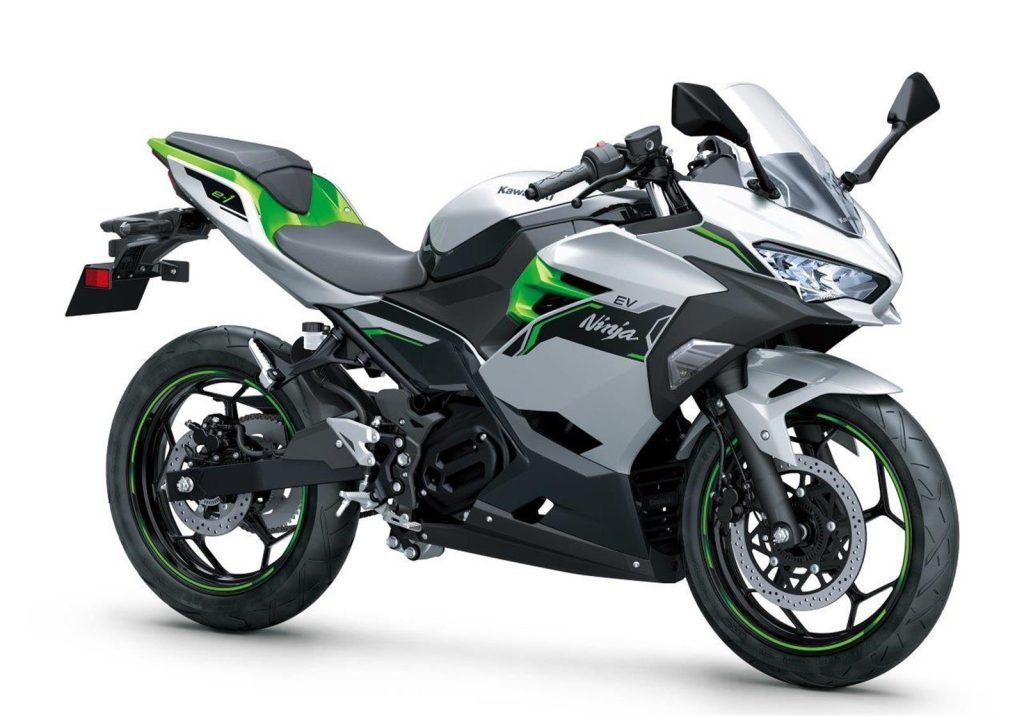
Kawasaki has officially announced several key specs for its upcoming electric motorcycles, as well as expected release dates. The only problem for these two highly anticipated models is that the new Kawasaki Ninja e-1 and Z e-1 aren’t going to knock anyone’s riding socks off.
We’ve already had a few hints regarding the entry-level performance of the two bikes thanks to classification documents that we reported on last month.
But now we’ve got the official numbers straight from Team Green, and they aren’t pretty.

The Kawasaki Ninja e-1 (faired sport bike) and the Z e-1 (naked bike) will both share the same 5 kW electric motor. That chain-driving motor is rated for 9 kW of peak power, but only in bursts.
It’s meant to crank out a top speed of up to 99 km/h (61 mph), though it’s not yet clear if that is the sustained speed or rather a burst speed.
Some electric motorcycles include a boost mode that allows riders to access the motor’s peak power for several seconds, often useful when overtaking a slower vehicle. Though at these top speeds, overtaking may not be an issue with which riders will need to concern themselves.


The bikes feature two removable batteries that can be charged either on-board or separately with a docking station, allowing street-level parkers to charge in their apartments or elsewhere away from the bike itself.
Kawasaki tellingly hasn’t revealed info about the battery capacity or range on a single charge, but neither are expected to be very high. Removable batteries limit the capacity to something that can be carried, which means no one should expect these to be long-distance batteries.
The largest removable batteries I’ve seen so far were in my NIU NQiGT Long Range, which had a couple 2.1 kWh batteries, each weighing around 12 kg (26.5 lb.). Carrying the pair up to my apartment was doable, but barely. So the Kawasaki Ninja e-1 or Z e-1 landing with much more than 4.2 kWh of battery capacity is not likely.
Kawasaki is also part of a battery consortium pushing for adoption of Honda’s swappable batteries to become an industry standard. It’s not clear if Kawasaki adopted Honda’s 1.475 kWh battery packs, but if it did, then we’d be looking at a bike with a meager 2.95 kWh of battery capacity. There are electric bicycles with that much battery.
For comparison, the SONDORS Metacycle electric motorcycle has a 4 kWh battery pack and despite advertising a range of between 60-80 miles (96-130 km), most owners have indicated that mixed riding nets closer to half of the claimed range.
So these are obviously very much commuter-level electric motorcycles, to say the least.

But don’t for a minute think these aren’t full-featured bikes. As the company explained itself, “Kawasaki Z e-1 and Ninja e-1 riders can also amaze their friends with a walk mode that allows these machines to maneuver at walking pace in both forward AND reverse – particularly useful for tight parking spots or moving backwards up an incline.” So sure, they don’t go very fast. But they can move… slowly!
To be fair, reverse is a useful feature on motorcycles, one that is easy to include on electrics but rarely seen on combustion engine motorcycles. But let’s not bend over backwards patting ourselves on the back when electric bicycles have the same features.
Both models are expected to debut in the UK next month, but the estimated price is as elusive as the battery specs. Kawasaki has remained mum on both, and so we’ll have to wait just a bit longer to find out how much the bikes will cost.
Electrek’s Take
I don’t mean to be overly harsh here, because the specs alone aren’t bad for a basic, simple commuter e-motorcycle. And the bikes look great, in true Ninja fashion.
The problem is that this is the Kawasaki Ninja we’re talking about here. It’s not a commuter motorcycle, or at least it wasn’t meant to be. Even the underpowered Ninja 125cc released a few years ago can hit nearly 75 mph (121 km/h), making it highway capable. But the Ninja e-1 sounds like it will struggle to slowly hit 60 mph (96 km/h), making it arguably dangerous to take on highways.
But again, these are obviously meant to be urban bikes, so maybe they will appeal to an urban crowd.
The real decider here though is going to be the price. Considering you can get truly highway-capable commuter e-motorcycles like the Ryvid Anthem and CSC RX1E for below US $8,000, the Kawasaki Ninja e-1 and Z e-1 will need to be considerably cheaper to achieve any market penetration. I mean, you can buy an electric scooter with similar specs for US $6K, for crying out loud.
What we’re looking at are basically SONDORS Metacycle-level specs, though at least from a company that has been around for longer and may continue to be around long after SONDORS.
Author: Micah Toll
Source: Electrek



